|
The breadbag in the German army goes back to Napoleonic times. The bag itself is quite simple in design. It is an unpartitioned
bag with two button on belt loops and a central hook to support the weight of the items stored within. The WWII breadbag
is a direct descendent of the WWI German breadbag, albeit with a few slight changes. An original WWI breadbag can be seen
below:
| WWI Breadbag |

|
As can be seen, the WWI version had two belt hooks, as well as a permanant shoudler strap. (As a side not,
it seems that the breadbag was never worn only from the belt in WWI, in fact, it seems that the preferred method was to carry
the bag over the shoulder, which is the direct opposite of the WWII preferred method.)
In 1931, the breadbag was revamped
to allow for a detachable shoulder strap. The belt loops were also modified. The two side straps had buttons added to allow
it to be pulled off the belt without removing all the equipment. A central hook was added to assist in bearing the
load of a full bag. Also, the colour was changed from ochre to a grey-green colour. Here is a picture of an early m31 bag.
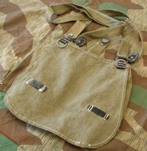
There were a number of variations in the M31 breadbag as it was produced through the war. These occurred in two main areas,
the belt loops and bag colour.
The loops on pre and very early war bags had leather added around the two side belt loops to reinforce and strengthen
the area that would be bearing most of the weight. However, most of these bags did not have leather around the buttonholes
(this is a feature in early postwar bags).
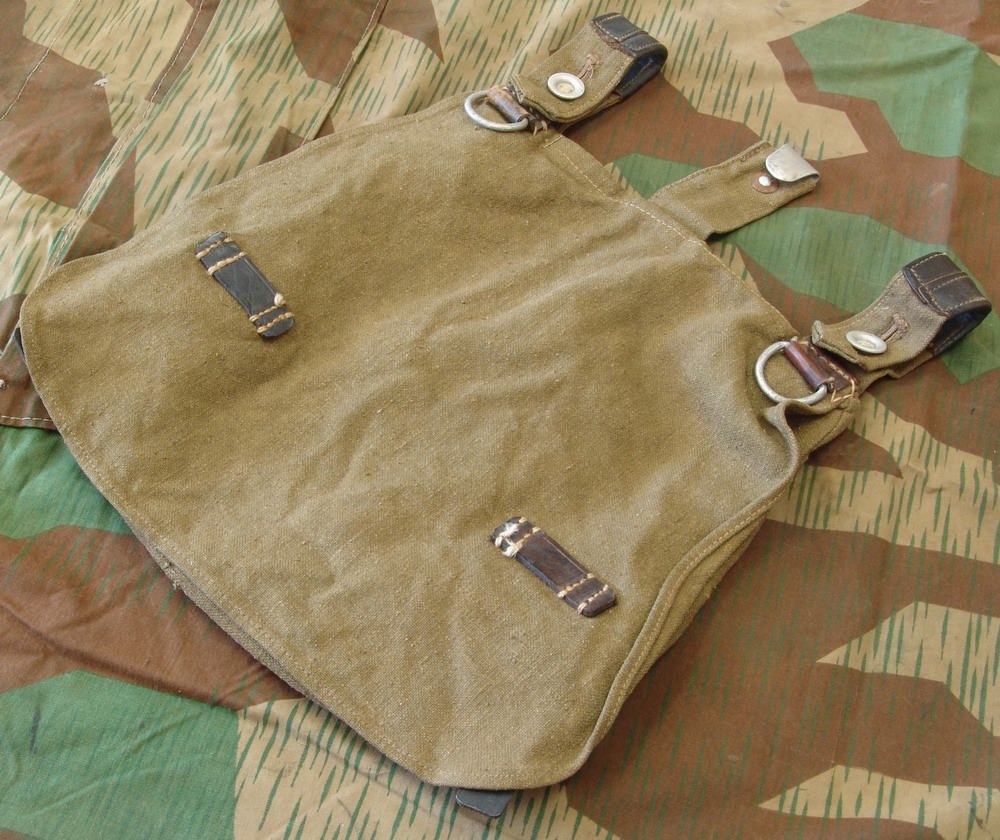
During the early part of the war, the leather, which was an unneeded expenditure, was dropped from the belt loops, and they
were left plain. This model is the most commonly seen model in the war.

The second variance is the colour of original M31 breadbags. During the early war period, breadbags were made in a feldgrau
colour. However, in 1941, the colour was changed to an olive green colour. However, as with most fabric German gear, there
were no universal dye colours, so the colours varied wildly from one bag to the next. Originals can be seen in nearly every
shade from a light grey-green to dark green. Quite naturally, the colour of the bag was also affected by fading and field
use. A couple examples of colour variation can be seen below.
| Courtesy of MP44.com |

|
It is also pertinent to note that breadbags were produced for many organizations other then the Wehrmacht, most notably the
HJ, DJ and Polezi organizations. These bags have some marked differences from the Army issue. Most notable is the fact that
the HJ and DJ versions have riveted front loops. Wehrmacht issue bags never (or VERY, VERY rarely) had riveted loops. The
Polezi bag was a completely different colour (Polezi blue-green). Also, a number of these bags also had one d-ring and loop
set, since these organizations only carried the canteen and not the mess kit.
| Polezi bag |
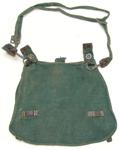
|
| HJ breadbag |
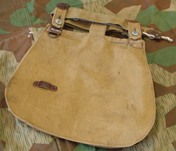
|
In 1944, the breadbag was redesigned and simplified. The belt loops were changed back to the WWI style permanent sewn
style, and a pouch was added to the front of the bag, under the flap for the cleaning kit. These were generally more of a
brownish green colour and were of a poorer quality fabric. These were late war issue and originals are hard to come by.
| M44 Breadbag with Hooks |
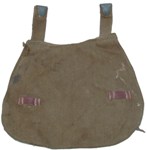
|
| Inside of M44 Bag |
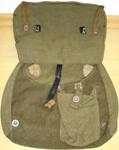
|
|

